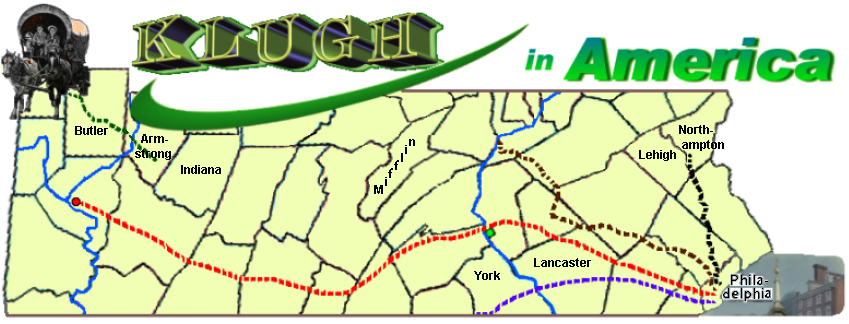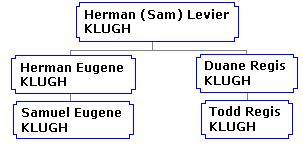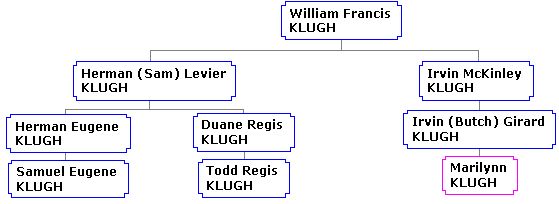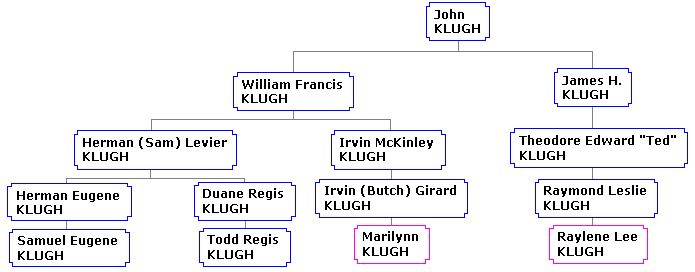
I’m Your "Second-Cousin, Twice-Removed” Explained
If someone walked up to you and said "Howdy, I'm your second-cousin, twice-removed," would you have any idea what they meant? Most people have a good understanding of basic relationship words such as "mother," "father," "aunt," "uncle," "brother," "sister," and "cousin" But what about the relationship terms that we don't use in everyday speech? What about terms like "second-cousin" and "second-cousin, twice-removed"? We don't tend to speak about our relationships in such exact terms ("cousin" seems good enough when you are introducing one person to another), so most of us aren't familiar with what these words mean. Sometimes, especially when working on your family history, it's handy to know how to describe your family relationships exactly. The definitions below should help you out.
Cousin (a.k.a "first cousin")
Your first cousins are the people in your family who have the same grandparents as you. In other words, they are the children of your aunts and uncles. In the example below, Sam and Todd are 1st cousins because they share the same grandfather.

Second-Cousin
Your second-cousins are the people in your family who have the same great grandparents as you, but not the same grandparents. In the example below, Sam and Todd are 2nd cousins to Marilyn because they share the same great grandfather.

Third, Fourth, and Fifth Cousins
Your third-cousins have the same great great grandparents, fourth-cousins have the same great great great grandparents, and so on. In the example below, Sam, Todd, and Marilyn are 3rd cousins to Raylene because they share the same great great grandfather.

Removed
The word "removed" is used to describe a relationship where two people are from different generations. You and your first cousins are in the same generation (two generations younger than your grandparents), so the word "removed" isn't used to describe that relationship. The words "once-removed" mean that there is a difference of one generation. For example, your father's first-cousin is your first cousin-once removed. This is because your father's first-cousin is only one generation younger than your grandparents but you are two generations younger than your grandparents. This one-generation difference equals "once-removed." Twice-removed means that there is a two generation difference. You are two generations younger than a first-cousin of your grandfather. In the example above, Duane is Sam's Uncle but he's also referred to as Sam's first cousin-once removed, and Irvin Girard is Sam's 2nd cousin-once removed, while Irvin McKinley is Sam's 2nd cousin-twice removed.
Relationship Charts Simplify Everything
Now that you're totally confused, take a look at the chart below. It's called a relationship chart, and it can help you figure out how different people in your family are related. It's much simpler than it looks, just follow the instructions.
Instructions for Using a Relationship Chart
1. Pick two people in your family and figure out which ancestor they have in common. For example, if you chose yourself and a cousin, you would have a grandparent in common.
2. Look at the top row of the chart and find the first person's relationship to the common ancestor.
3. Look at the far left column of the chart and find the second person's relationship to the common ancestor.
4. Determine where the row and column containing those two relationships meet.
| Common Ancestor | Child | Grandchild | G-grandchild | G-g-grandchild |
|---|---|---|---|---|
| Child | Sister or Brother | Nephew or Niece | Grand-nephew or niece | G-grand-nephew or niece |
| Grandchild | Nephew or Niece | First cousin | First cousin, once removed | First cousin, twice removed |
| G-grandchild | Grand-nephew or niece | First cousin, once removed | Second cousin | Second cousin, once removed |
| G-g-grandchild | G-grand-nephew or niece | First cousin, twice removed | Second cousin, once removed | Third cousin |
Just When You Think You Understand It
When you are working with older records, be aware that the meaning of the word "cousin," along with the meanings of other relationship terms, have changed over time. If in doubt, do an Internet search of Genealogical Word meanings. In addition, because Latin (and in our case - German) was used in some older records, you may also want to see Latin and/or German terms to learn their equivalents of some relationships.
(c) July 4, 2011: (All rights reserved)